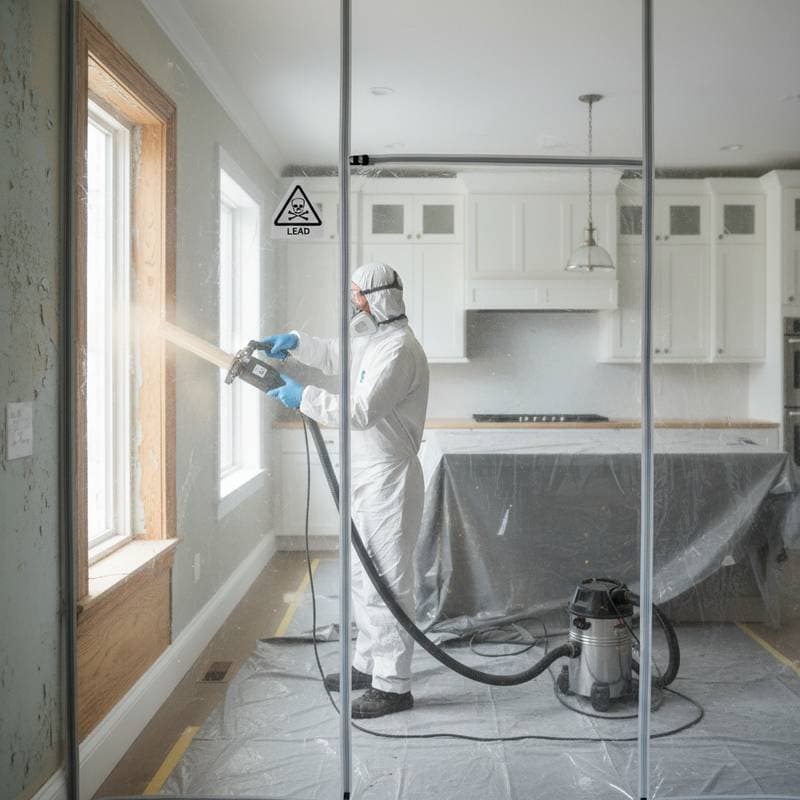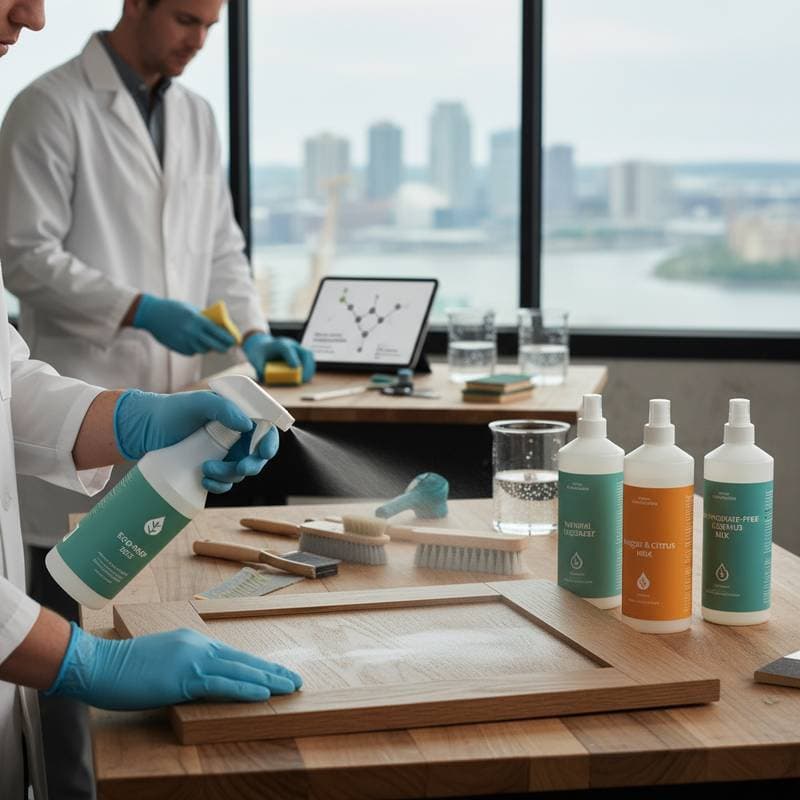TSP Ban Introduces $500 Increase to Painting Preparation Costs
Homeowners who plan to repaint their residences now encounter an additional hurdle due to the prohibition on trisodium phosphate, known as TSP. This cleaner served as a staple for surface preparation over many years, effectively removing grease, dirt, and contaminants to promote strong paint adhesion. Recent environmental and safety rules have curtailed its application, prompting contractors and independent workers to adopt safer options that prove more costly and time-consuming.
This transition appears subtle at first glance, but it carries a clear economic consequence. Painting experts indicate that the revised cleaning protocols typically elevate a standard residential job by about $500. Homeowners gain value from grasping the reasons behind this shift, exploring available alternatives, and adjusting their strategies for future painting endeavors.
Reasons for TSP's Widespread Use in Surface Preparation
TSP gained favor among professionals for its capacity to dissolve tough residues without harming common surfaces. Contractors applied it to walls, siding, trim, and exterior masonry prior to priming or topcoating. Such treatment guaranteed uniform paint application and extended durability.
However, the phosphate component in TSP posed environmental risks. Upon rinsing, these phosphates could flow into water systems, fostering excessive algae that reduces oxygen availability for marine life. Persistent worries about water quality led authorities to impose restrictions on phosphate-containing cleaners across numerous areas.
Detailed Project Cost Analysis
Typical Cost Ranges
- Basic interior repaint: $2,000 to $3,000
- Standard exterior repaint: $3,500 to $6,000
- Premium multi-room or full exterior repaint: $6,500 to $10,000
The TSP prohibition, coupled with safer cleaning replacements, raises average preparation expenses by $400 to $600, varying by residence scale and surface state.
Standard Inclusions
- Labor dedicated to cleaning all surfaces designated for paint
- Supplies comprising phosphate-free cleaning agents
- Processes for rinsing and allowing surfaces to dry prior to painting
- Safeguards for adjacent landscaping and fixtures
Additional Expenses
- Removal of severe mildew or smoke deposits: $150 to $300
- Lead-compliant preparation for pre-1978 homes: $200 to $500
- Tailored handling for brick, stucco, or vinyl: $100 to $250
Influences on Total Expenses
| Factor | Cost Influence | Specific Instances |
|---|---|---|
| Surface condition | Extends labor duration | Presence of dense grease, mildew, or powdery buildup |
| Home size | Elevates overall amount | Expanded areas of walls or siding requiring treatment |
| Substitute type | Alters supply expenses | Certified eco-products command higher prices |
| Local rules | Impacts option access | Certain locales mandate particular approved mixtures |
Mechanisms Behind the Cost Escalation from the Ban
Both supply and workforce elements fuel the price rise. Replacements for TSP generally consist of biodegradable mixtures that necessitate extended application and thorough rinsing. In contrast to TSP's rapid action on contaminants, these options often demand repeated applications or manual agitation to match efficacy, resulting in heightened labor, greater water consumption, and prolonged drying periods before painting commences.
Experts in painting also allocate more funds toward compliant cleaning agents. Certain environmentally sound substitutes carry prices up to three times that of TSP per gallon. Scaled to an entire undertaking, these expenditures accumulate substantially.
Overview of TSP Replacement Options
Frequently used alternatives to TSP encompass phosphate-free cleaners and degreasers derived from surfactants or citrus extracts. These formulations pose reduced risks to ecosystems and minimize irritation to skin or eyes, though their mechanisms differ from TSP.
- Phosphate-free TSP equivalent: Delivers comparable potency yet operates more gradually, typically calling for increased manual effort.
- Citrus-derived cleaner: Excels at dissolving grease and natural accumulations, suiting kitchen interiors and outdoor elements.
- Non-toxic degreaser: Performs adequately on surfaces with minimal soiling but falters against substantial residues.
Contractors routinely evaluate a test area to confirm the agent leaves no film that could hinder paint bonding. Comprehensive rinsing and drying remain vital, since residual cleaner may provoke peeling or irregular coatings.
Anticipated Project Timelines
Adopting substitutes in place of TSP extends the preparation interval.
- Modest interior task: One additional day allocated to cleaning and drying
- Complete exterior overhaul: Two to three extra days, influenced by atmospheric conditions and material types
Extended preparation may postpone the painting phase, particularly in moist or chilly environments that slow evaporation. Homeowners ought to incorporate these delays into their financial and calendar planning.
Professional Assistance Versus Self-Directed Cleaning
Scenarios Favoring Professional Services
Engaging a certified painter or skilled laborer proves advisable when:
- The scope covers several rooms or extensive outdoor areas.
- Prior paint coats require meticulous handling.
- Evidence exists of mildew, smoke harm, or lipid deposits.
- Community standards demand certified cleaning techniques.
Such specialists possess commercial-strength replacements and tools, guaranteeing residue-free results.
Viability of Homeowner-Led Efforts
Individuals may manage cleaning independently for limited undertakings, such as one room or minor repairs, provided:
- Surfaces exhibit favorable initial states.
- Selected cleaners prove user-friendly and rinse efficiently.
- Adequate airflow and safety equipment are in place.
Self-directed work trims labor fees but risks falling short of expert benchmarks. Inadequate preparation often yields weak adhesion, curtailing finish longevity and inflating future outlays.
Selecting a Suitable Contractor
Identifying a practitioner versed in current cleaning norms holds importance. Prioritize those who:
- Describe their preparation routine explicitly, naming the TSP replacement employed.
- Furnish itemized quotes distinguishing cleaning from application charges.
- Maintain valid credentials and coverage, particularly for lead or outdoor tasks.
- Supply endorsements from comparable prior engagements.
- Extend guarantees addressing adhesion and coating performance.
Steps Homeowners Can Take in Advance
- Relocate furnishings and adornments from wall vicinities.
- Shield flooring or shift exterior objects including grills and planters.
- Inspect for moisture sources or soft areas that might impair bonding.
- Communicate identified concerns like smoke marks or greasy films.
Verifying Preparation Quality
- Surfaces devoid of residues or powdery layers.
- Uniform feel and complete aridity.
- Absence of observable grease or mildew traces.
Strategizing for Lasting Results
The TSP restriction modifies surface readiness methods among painters, yet it underscores the value of meticulous cleaning. Homeowners position themselves advantageously by regarding added time and funds as commitments to enduring coatings and ecological stewardship. Ventures that overlook thorough preparation frequently necessitate earlier rework, incurring greater cumulative costs.
Frequently Asked Questions
Why Was TSP Prohibited?
TSP includes phosphates that contribute to waterway degradation through algae proliferation. Regulatory bodies now limit its deployment in cleaning and painting contexts to curb contamination.
What Additional Payment Should Homeowners Anticipate for Substitutes?
Projects commonly incur $400 to $600 more. This stems from pricier agents, prolonged workforce involvement, and expanded rinsing plus drying procedures.
Does a TSP Substitute Influence Paint Performance?
Not if cleaning and rinsing occur correctly. Contemporary options effectively eliminate contaminants. The critical factor involves confirming no remnants persist prior to primer or topcoat application.
Is TSP Permissible for Minor Self-Directed Tasks?
Select jurisdictions permit limited or interior applications of adjusted phosphate-absent variants. Review labels and regional guidelines prior to employing TSP or analogous products.
How Can One Confirm Contractor Adherence to Regulations?
Inquire about preparation techniques and seek documented product details. Compliant practitioners align with area environmental mandates and maintain openness regarding procedures.
What Consequences Arise from Inadequate Pre-Painting Cleaning?
Substandard efforts produce peeling, blistering, or patchy outcomes. Contaminants form obstacles to adhesion, diminishing coating endurance.



